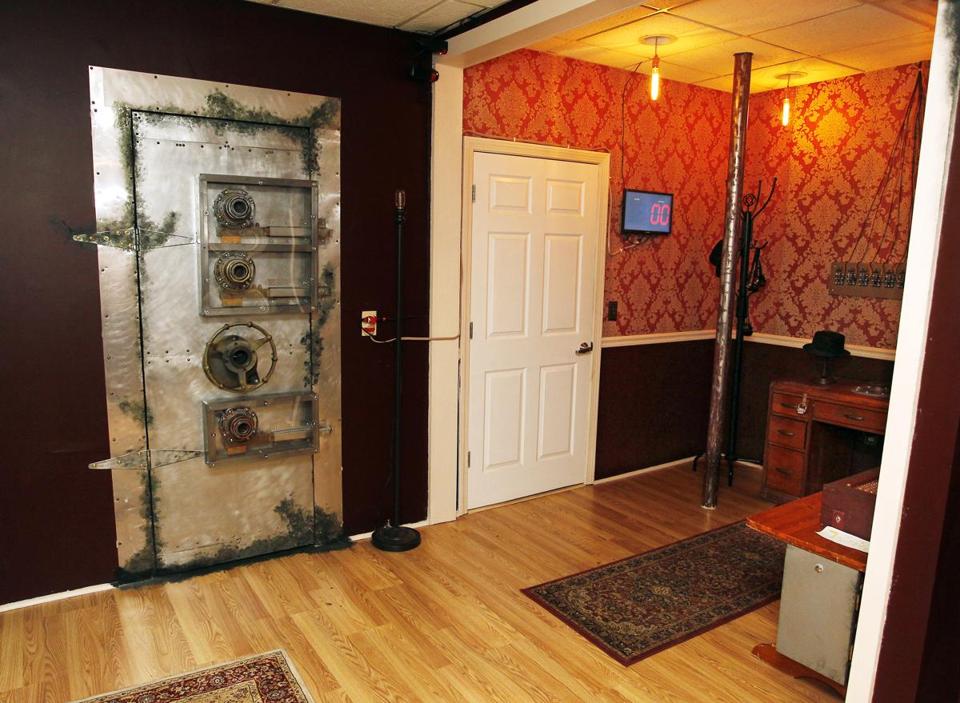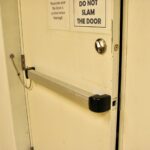A few years ago, I wrote about potential code modifications for escape rooms – the now-popular entertainment facilities where participants are “locked in a room” until they can solve the clues needed to escape (that blog post is here). These rooms are not specifically addressed by the model codes, so any egress situations that do not meet the code requirements for free egress must be approved by the Authority Having Jurisdiction (AHJ).
Often, non-code-compliant decisions about inhibiting egress are based on the belief that a fire or other emergency is unlikely to happen. But last Friday, five 15-year-old girls were killed in a fire in an escape room in Poland, and one man was injured. Media outlets are reporting that the fire began in a reception area and was started by a gas leak and/or shoddy wiring.
With many tragedies like this one, lessons tend to be learned after it’s too late for the victims. The US model codes are in place to help keep building occupants safe, and these codes are created and modified in part because of fires and other events that have occurred. When we see a code violation, it may be tempting to brush it off thinking, “The chances are slim that this condition will actually put someone’s life at risk.” But imagine explaining that to the victims’ families (or the judge).
- If the calculated occupant load of an individual room is less than 50 people, only one exit is typically required. I have seen escape rooms where the entrance door is never locked, and participants solve clues to open a different door in the room which is not considered an egress door. In most cases, this arrangement would be code-compliant as long as the means of egress is readily distinguishable.
- Some escape room doors have electrified hardware that can be released by the attendant or a “panic button” in the escape room. If the door is a required means of egress from the room, this set-up would have to be approved by the AHJ, and the hardware should be “fail safe.” This type of hardware will allow egress when power is cut – whether that function is performed by a button or by the fire alarm system.
- Electromagnetic locks are fairly common on escape room doors, with a release button beside the door. Mag-locks are fail safe, so the lock can be released by the fire alarm or sprinkler system if the building has one. The auxiliary release button should be the type that will unlock the door for a period of time – usually 30 seconds. This 30-second release is one of the requirements for the auxiliary push button used with mag-locks that are released by a sensor – the sensor wouldn’t be feasible in most escape-room situations (the door would unlock whenever someone approached the door). Because an electrically-locked door with just an auxiliary push button does not meet the model code requirements without the sensor, this application must be approved by the AHJ if the door is an egress door. Update: Here’s a news story about a US escape room that uses mag-locks.
When in doubt, contact the local AHJ to determine what is acceptable in the facility’s jurisdiction.
~~~
‘Escape room’ fire in Poland kills 5 teenage girls – New York Times
“Security was not ensured and that led to the tragedy,” Chief Suski said, adding that there had been no proper evacuation route and a “lot of negligence” at the location. Mr. Gasiorowski said the fire probably broke out in the reception room and blocked a pathway to evacuate the girls.
~~~
Protecting escape rooms and other special amusement buildings – NFPA Journal
The fire safety implications of escape rooms are obvious to those of us intimate with fire and life safety: countless people have lost their lives in fires because they were locked in a building or their means of egress was otherwise compromised and out of their control. The safety implications for escape rooms were made real in January, when five teenage girls died in a fire involving an escape room amusement in Poland.
~~~
Five teens killed in fire at Poland ‘escape room’ birthday party – NBC News
~~~
Photo: Stew Milne for the Boston Globe
You need to login or register to bookmark/favorite this content.






The few we have done we tell the owner, unless you want a lot of requirements, “ money spent”,
Just make sure any door is normally openable.
If the participant opens the door, they lose.
Special Amusement Buildings 2015 IBC section 411 and similar previous editions
Thanks Curtis –
I think some AHJs consider these occupancies Business or Assembly, because the definition of a special amusement building includes a device or system that conveys passengers or provides a walkway through a course. Here’s the full definition: “A special amusement building is any temporary or permanent building or portion thereof that is occupied for amusement, entertainment or educational purposes and that contains a device or system that conveys passengers or provides a walkway along, around or over a course in any direction so arranged that the means of egress path is not readily apparent due to visual or audio distractions or is intentionally confounded or is not readily available because of the nature of the attraction or mode of conveyance through the building or structure.”
– Lori
This type of business would seem to meet the intent of “Special Amusement Buildings” and would need to meet the IBC’s Section 411 (see https://codes.iccsafe.org/content/IBC2015/chapter-4-special-detailed-requirements-based-on-use-and-occupancy).
This section determines the occupancy (Group A if OL>50 occupants vs Group B if OL<50 occupants) and requires the following:
a) an automatic fire detection systems,
b) an audible alarm if activation of a single smoke detector, or the automatic sprinkler system, or an other automatic fire detection device,
c) an emergency voice/alarm communication system,
d) special exit signage, and
e) interior finish of Class A.
Thanks Todd –
I think some AHJs consider these occupancies Business or Assembly, because the definition of a special amusement building includes a device or system that conveys passengers or provides a walkway through a course. Here’s the full definition: “A special amusement building is any temporary or permanent building or portion thereof that is occupied for amusement, entertainment or educational purposes and that contains a device or system that conveys passengers or provides a walkway along, around or over a course in any direction so arranged that the means of egress path is not readily apparent due to visual or audio distractions or is intentionally confounded or is not readily available because of the nature of the attraction or mode of conveyance through the building or structure.”
– Lori
Had an offer to write a specification for one and the architect wanted a “no escape room”, I passed on the project.
I would classify an escape room as a special amusement in a nice letter and advise the applicant of their right to appeal.
From 411.1
Special amusement buildings having an occupant load of less than 50 shall comply with the requirements, for a Group B occupancy and Sections 411.1 through 411.8
From commentary just below that section
A special amusement building is one in which egress is not readily apparent, is intentionally confounded or is not readily available (see E 411.2).
Sadly, this tragedy occurred, but I don’t think there was any way to stop this from happening. I will share this post with my friends, so I can get their opinion on this. I am confident they will agree with me.
Escape room tragedies don’t happen frequently, but when disasters happen, it makes me sad. I hope that no more tragedies like this will happen. Thank you for letting us know about this tragedy.